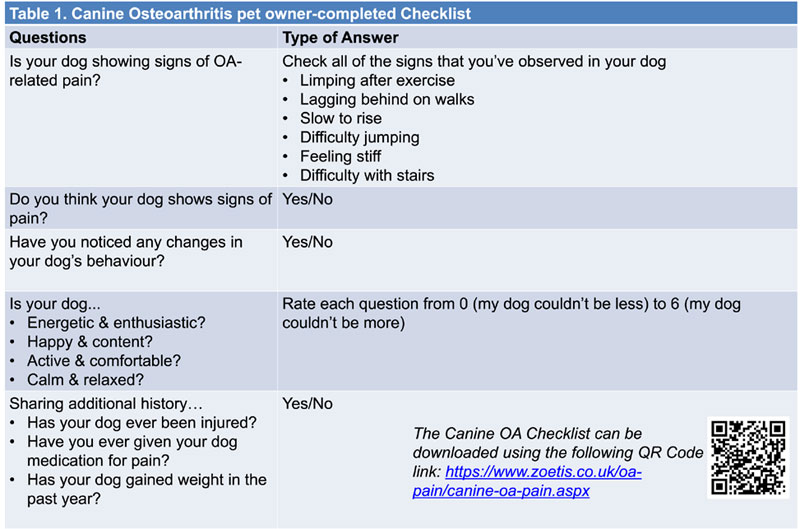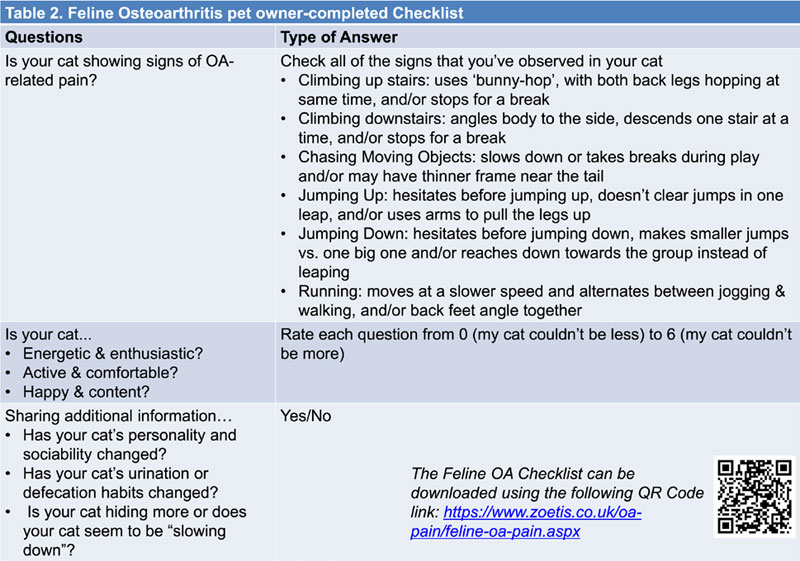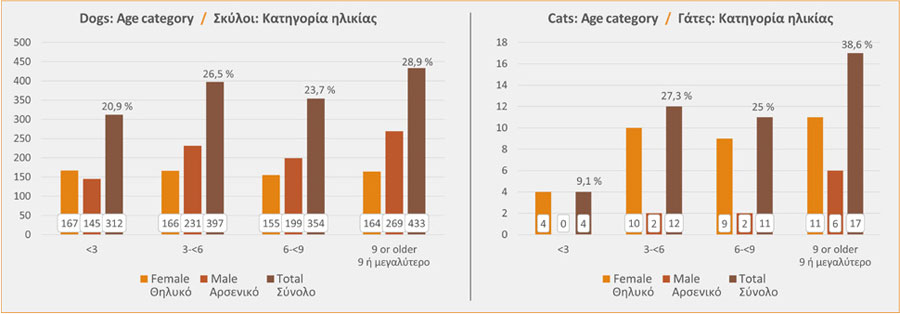Valiakos G. Assistant Professor, Faculty of Veterinary Science, University of Thessaly, Greece | Tsipianitis E. Asclepius One Health Platform, Greece Trachili A. Asclepius One Health Platform, Greece | Marinos Z. Asclepius One Health Platform, Greece
The text of this study is a republication of the project “Osteoarthritis (OA) Cases in Dogs and Cats in Greece”, which was published in poster form at the 27th FECAVA Eurocongress, (Prague, Czech Republic 8-11 June 2022. The study received the “Best Poster Presentation of the Congress” award.
In this study, a surveillance system was organized an implemented in Greece to collect data on cases of canine and feline osteoarthritis (OA) encountered by veterinarians in daily practice. Moreover, the impact of the addition of a pet owner-completed canine and feline checklist on the diagnosis of OA was assessed. Findings demonstrated that realtime data collection systems on the occurrence of diseases/syndromes in everyday clinical practice, can be an important tool for veterinarians as they can significantly help them adapt their diagnostic and therapeutic approach. It has also been shown that the introduction of a checklist completed by the pet owner contributes to an increase in the number of OA cases recognized by the veterinarian.
Osteoarthritis (OA) Cases in Dogs and Cats in Greece.
Valiakos G, Tsipianitis E, Trachili A, Marinos Z.,
27th FECAVA Eurocongress, Prague (Czech Republic), 8-11 June 2022, p. 348.
Introduction
Real-time collection of data on important diseases that concern the veterinary practitioner in daily clinical practice is a major scientific goal. The organization and implementation of such a surveillance system contributes significantly to the full understanding of the dynamics and special features of the diseases that veterinarians are called to deal with, given that they change both spatiotemporally and due to other factors (e.g., the preventive measures applied by the owners) that affect their incidence.
In the present study, such a surveillance system for the collection of data on canine and feline osteoarthritis cases encountered by veterinarians in daily practice, was organized and implemented.
Objectives
Develop a network of veterinary practitioners and a data collection system that will allow a real-time collection of daily practice data on specific diseases.
Describe the demographic, lifestyle, clinical findings and diagnostic approach to OA in dogs and cats in Greece.
Find statistically significant correlations among various demographic and clinical characteristics of OA in dogs and cats.
Assess the impact of the addition of a pet ownercompleted canine and feline checklist on the diagnosis of OA.
Methods
A network of approximately 50 veterinarians from different regions in Greece was organized, aiming to collect data on the occurrence of osteoarthritis cases in dogs and cats that are admitted to their clinics.
A data collection questionnaire was developed and sent to the practitioners electronically through a Veterinary Management System (Vet Platform®, http://vetplatform.gr/en_gb/), they were asked to fill it whenever they had to deal with osteoarthritis cases.
The questionnaire was easy to complete, and it was compiled to collect the following data; demographic (breed, sex, age, weight, etc.), lifestyle (living inside the house, outside the house, with other animals, etc.), data on the clinical status of the animal (e.g., clinical signs and joints affected), the diagnostic approach (with special focus to radiography findings) etc. Statistical analysis was performed using SPSS ver 26.
Two pet owner-completed screening checklists (Enomoto et al. 2020; Wright et al. 2022) were implemented during the course of the study to help identify OA cases. The checklists helped the owners identify any suspicion of OA and report it to the practitioner, by asking simple questions regarding pet behaviour (Tables 1 and 2).


Results
A total of 1.540 cases were collected over a period of 13 months (November 2020 - November 2021). Of these, 1.496 cases were canine (844 males and 652 females) and 44 cases were feline (10 males and 34 females).
A significant increase of reporting cases was observed after providing the participants with an owner-completed checklist regarding observation of signs characteristic of osteoarthritis to their pets.

Most cases were reported on heavier dogs (64% of cases on animals >20 kg of weight). Most dogs belonged to highly kinetic breed categories (pastoral, gundog and working dogs) of large size.

Osteoarthritis is more common in dogs and cats of older age, but also present across all age groups.

Walking disorder and pain when moving the affected joint were the most reported clinical signs in dogs. In all feline cases, walking disorder and reluctance to move/exercise was reported, followed by muscle atrophy.

Most affected joints were the knees (47,5% of dogs and 81,8% of cats) and the hips (38,5% of dogs and 40,9% of cats) followed by the elbows (in 16,8% of dogs).

The most prevalent radiographic finding was osteophyte development (87,3% of radiographs), followed by swelling of periarticular soft molecules and intra-articular collection (18,8% and 13,2% of radiographs respectively).
Statistical analysis demonstrated, the significantly higher rate of the presence of joint effusion to heavier dogs and pain to younger (p<0.05).
Hip joints were mostly affected to older and heavier dogs, while elbow joints were reported to younger and lighter animals (p<0.05).
Conclusions and future directions
Osteoarthritis is not a disease exclusively of the geriatric patient, prevalent across all age groups, but incidence increases with age.
Canine OA is prevalent across all weight groups and breed types, but incidence increases with weight and more active breeds (pastoral, gundog, working).
Feline OA is significantly underdiagnosed compared to dogs.
Real-time data collection systems on the occurrence of diseases / syndromes in everyday clinical practice, can be an important tool for veterinarians. It can greatly help them adapt their diagnostic and therapeutic approach.
This study demonstrates that the introduction of a pet owner-completed checklist helps and improves significantly the level of diagnosis.
Acknowledgements & References
This study was funded by Zoetis Inc.
Enomoto, M., Lascelles, B., & Gruen, M. E. (2020). Development of a checklist for the detection of degenerative joint disease-associated pain in cats. Journal of feline medicine and surgery, 22(12), 1137–1147.
Wright, A., Amodie, D. M., Cernicchiaro, N., Lascelles, B., Pavlock, A. M., Roberts, C., & Bartram, D. J. (2022). Identification of canine osteoarthritis using an owner-reported questionnaire and treatment monitoring using functional mobility tests. The Journal of small animal practice, 10.1111/ jsap.13500.



